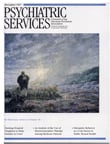Mental Ills and Bodily Cures is an insightful and sometimes provocative account of somatic treatments in psychiatry in the first half of the 20th century. Joel Braslow, an assistant professor in the departments of psychiatry and history at the University of California, Los Angeles, uses patient records from California state hospitals (primarily Patton and Stockton) to reconstruct psychiatrists' decision-making processes about treatment approaches.
The 175-page text is divided into chapters focusing on hydrotherapy, sexual sterilization, malaria treatment, electroconvulsive therapy, and lobotomy. A second chapter on lobotomies focuses on the reality that a large majority of lobotomized patients were women, a reality that Braslow convincingly argues unwittingly reaffirmed the social nature of therapeutic practices.
As Braslow points out in his brief but excellent introductory chapter, only within the last 25 years has there been a significant growth in historical scholarship focusing on medical therapeutics. John Harley Warner's 1986
The Therapeutic Perspective (
1), which focuses on 19th-century medical practice in America, is one such work, and Braslow's text is another.
In the introduction Braslow notes that he is "critical of an exclusive devotion to biological psychiatry" and that the work is, "in part, a critique of physical solutions to psychological distress." But the book is much more than that. Braslow goes on to describe a central theme of the book, that "whatever biological consequences a particular therapy has are mediated by and interpreted through the way doctors see disease and its cure, which are themselves determined by therapeutic practice."
Using patient records, which contain verbatim transcripts of case conferences including patient interviews, Braslow identifies the interplay between physicians and patients. But more extensively, and more important, he reconstructs how physicians combined the social and what they believed to be the scientific to solidify the use and acceptance of somatic therapies, many of which now seem extreme. The statements of patients are very powerful and perhaps might have been used even more frequently. They remind the reader of other great works such as Nancy Tomes' account (
2) of Thomas Kirkbride and Jeffrey Geller and Maxine Harris' edited work (
3) about the experiences of women patients.
One minor deficit of the work is that the effectiveness of electroconvulsive therapy (ECT) is understated. Certainly in the California hospitals, as elsewhere, ECT was overused, and, as Braslow points out, sometimes the therapeutic intent appeared to have been punishment, or at least control. Nevertheless, ECT is effective as well as efficacious, and this underutilized treatment is again stigmatized by being lumped indistinguishably with clitoridectomy and sterilization. Also on occasion Braslow's interpretation of intent seems to overreach the data, as when he states that a patient was "simply a receptacle of biological disease, legitimate fodder for [physicians'] curiosity."
Those are only minor deficits. Overall, Mental Ills and Bodily Cures is an outstanding work that will appeal not only to historians and those interested in mental illnesses and their treatments but to anyone who wonders about "evidence-based" medicine and therapeutic practice.

